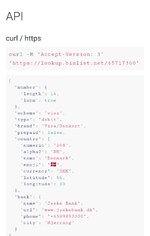chushpan
Professional
- Messages
- 1,300
- Reaction score
- 1,536
- Points
- 113
Introduction
Checking the BIN (Bank Identification Number) for Non-VBV (Non-Verified by Visa) or Auto-VBV (automatic verification via Verified by Visa) is a process that allows you to determine whether the card supports additional levels of security for online transactions. These security levels include two-factor authentication (2FA) or a password request to confirm the payment.What is Non-VBV and Auto-VBV?
- Non-VBV:
- Cards without Verified by Visa support.
- Do not require additional authentication for online payments.
- Convenient for scammers, as they do not require a one-time password (OTP).
- Auto-VBV:
- Cards with automatic verification via Verified by Visa.
- Two-factor authentication is supported, but it can be implemented in different ways (for example, automatic confirmation via SMS or a pre-saved password).
- VBV (Verified by Visa):
- Cards with an active security system that requires entering a one-time password or passing two-factor authentication.
- Makes it much more difficult to use stolen card data.
Why do they check BIN for Non-VBV/Auto-VBV?
- For business:
- Assessing the risks of fraud when accepting payments.
- Analysis of vulnerabilities in the transaction processing system.
- For safety studies:
- Study of methods of protection of bank cards.
- Developing more robust fraud prevention systems.
- For illegal purposes(which is a crime):
- Identifying cards that are easier to use for fraudulent transactions (carding).
Methods to check BIN for Non-VBV/Auto-VBV
1. Using online services
There are many legitimate services for checking BIN. These services provide information about the issuing bank, card type, country and security level (VBV/Non-VBV/Auto-VBV). Some popular services are:How to use:
- Enter the first 6 digits of the card number (BIN) in the search field.
- Get detailed information including VBV/Non-VBV/Auto-VBV status.
Example answer:
JSON:
{
"scheme": "visa",
"type": "debit",
"brand": "Classic",
"country": {
"numeric": "840",
"alpha2": "US",
"name": "United States"
},
"bank": "Bank of America",
"vbv": false,
"auto_vbv": true
}Here "vbv": false indicates Non-VBV, and "auto_vbv": true indicates Auto-VBV.
2. Using the API
If you are developing your own BIN verification solution, you can use third-party API services. For example:- Binlist API
- IP2WHOIS BIN Checker API
Example of a request to the Binlist API:
Bash:
curl https://lookup.binlist.net/45717300The response will contain JSON with information about the card:
JSON:
{
"scheme": "visa",
"type": "debit",
"brand": "Classic",
"country": {
"numeric": "208",
"alpha2": "DK",
"name": "Denmark"
},
"bank": "Jyske Bank",
"vbv": false,
"auto_vbv": true
}3. Testing on test gateways
Some processors provide test gateways to test payments. You can try to conduct a test transaction using BIN to see if additional authentication is requested.4. Manual check through databases
In some cases, you can use BIN databases available on the Internet. However, be careful:- Many databases are located on the dark web and may be illegal.
- Use of such resources may result in criminal liability.
How to detect Non-VBV/Auto-VBV manually?
If you have access to the card data, you can check for the following signs:- Issuer country:
- In some countries (e.g. developing regions) Non-VBV cards are more common.
- In developed countries, VBV/Auto-VBV are more commonly used.
- Card type:
- Debit cards are more likely to have Non-VBV status than credit cards.
- Corporate cards can support Auto-VBV.
- Issuing bank:
- Some banks do not support VBV/SecureCode.
- Information about banks can be found in open sources.
Examples of BIN for different types of cards
| BIN | Card type | Page | VBV/Non-VBV/Auto-VBV |
|---|---|---|---|
| 457173 | Visa | Denmark | Non-VBV |
| 492910 | Visa | United States | Auto-VBV |
| 527498 | MasterCard | Brazil | VBV |
Important Notes
- Legality of actions:
- Using card data for fraudulent transactions is a criminal offence.
- BIN verification should only be performed for legitimate purposes.
- Safety:
- Do not store or transmit other people's card details.
- Use only legal services to check BIN.
- Legal consequences:
- In most countries, engaging in carding or card fraud is punishable by imprisonment and large fines.
Conclusion
Checking BIN for Non-VBV/Auto-VBV is possible using legitimate online services, APIs or testing gateways. However, it is important to remember that any use of this information for illegal purposes will result in serious legal consequences. If you want to protect your business or research security methods, use these tools responsibly and within the law.If you have specific questions about legal ways to use BIN, feel free to ask!

